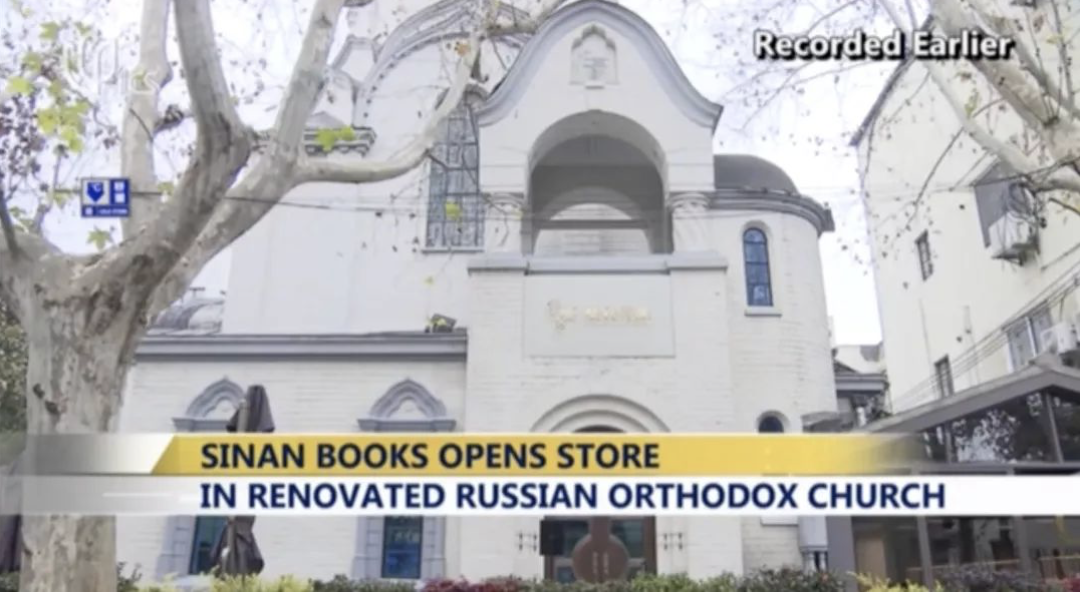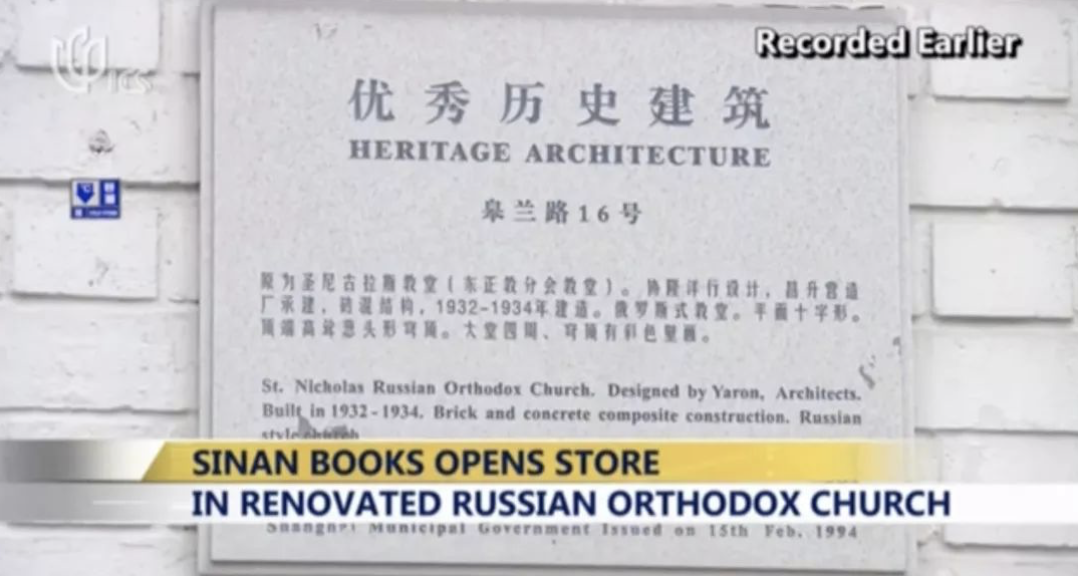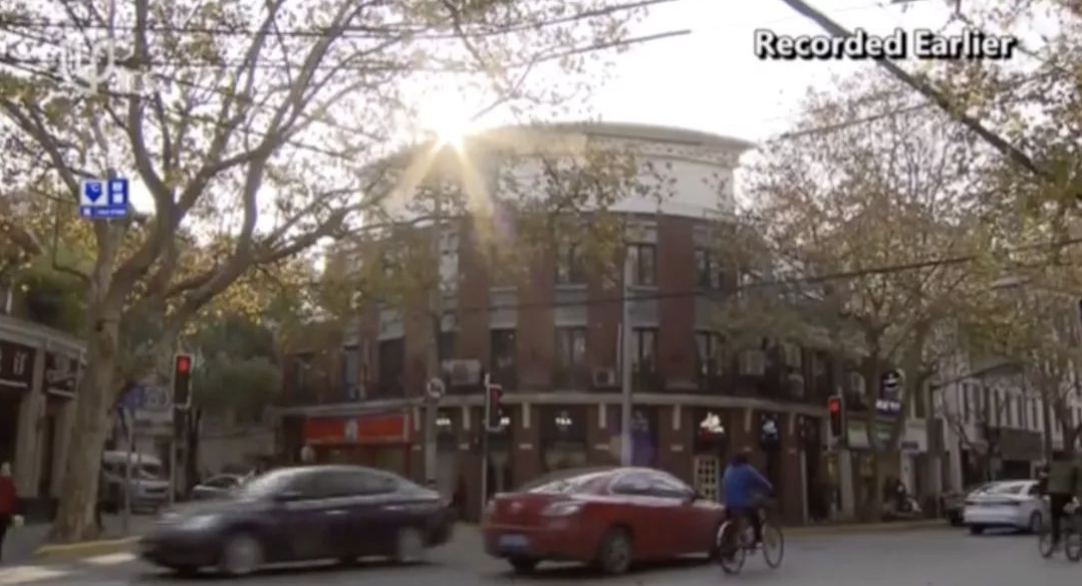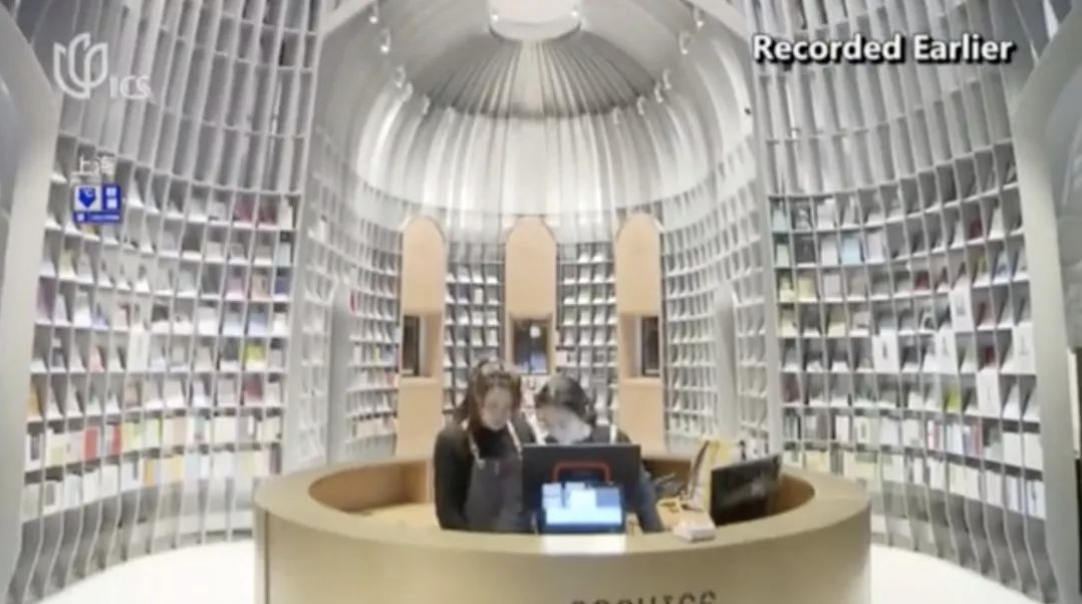视频|HISTORICAL BUILDING PRESERVATION GIVEN MODERN TWIST

Finding a balance between the preservation and renewal of historical buildings has been a hot topic in recent years. Just at the end of last year, a new bookstore specialising in poetry opened in a renovated Russian orthodox church. Earlier, my colleague Wang spoke to an expert from Shanghai Jiao Tong University, school of design. To learn more.
Historical Building Preservation Given Modern Twist

Q 1
Sinan books opened a new bookstore, Golan road, in Huangpu district. But what really stands out is that it is actually built in a renovated Russian orthodox church. What do you think of this case
When you consider a church building and a church building essentially is a meeting place and in most cases at bookstores should be uplifting. But in this case, it's a bookstore that specializes poetry, so I think it's meant to be uplifting. So, in that case, I think there is a perfect fit between the original meaning of the building and the new purpose. I think that really shows a wonderful example of how A historic building can be given a new lease of life.

Q 2
Do you think some protective measures have been taken during the process?
In that particular case, I think some aspects that have been wonderfully done, and the way of designing. The bookshelves as an additional layer which follows the soaring ceiling of the church dome, is a wonderful idea. And also, the bookshelf itself is detached from the original building fabric, which is very important because when it comes to a historical preservation, it's very important that whatever we do, it is reversible.

Q 3
So, what do you think are the important elements that we need to take into consideration in terms of the protection of historical buildings?
In the context of Shanghai, much of what we have been doing is what I call cosmetic work. Cosmetic work is quite dangerous when it comes to preserving buildings with the heritage value, because:
For one, you cover the existing built fabric, and in doing so you erased the traces of the history, the memories of it, and also the beauty of aging. The second, you may make permanent damage to it, which cannot Be reversed. In that instance, you actually destroy the heritage value. So, I think because the pursuit of something that is shining and new should not be regarded as the primary of preserving the built heritage.

Q 4
In your opinion, what are the major challenges with regards to preserving these historical buildings and also renew?
Well, there are a few. The first thing is to consider whether or not the there is this potential fit. And secondly, I think the built heritage should not be considered as merely a physical object. And sometimes we preserve something, not because in terms of the design, it is of high quality. It's because it's a carrier of wonderful memories. So, I think people and buildings relationship Should be of more important consideration. And in that case, we should consider not just the physical renovation or preservation of the beauty. We also should consider who will use it. And the thirdly, I think we should consider techniques. And I think one of the important techniques that we should consider is to make sure whatever you do to the heritage buildings that is reversible in order to make it reversible. It's always very wise to consider the juxtaposition of new and old. Sometimes The new is separated from the old and they form a dialogue, And that's fascinating. And I think there is much that we can learn from other countries.

Q 5
So, is there anything else and the more that can be learned from other countries when it comes to protecting historical buildings and also renewal?
Generally speaking, in Anglo Saxon countries or the English-speaking countries, the attitude is rather conservative and they either treat the buildings as it is or they do not dare to do something new. But in Europe, particularly in countries such as Italy, which is so rich with this beautiful heritage, and when we look at the ancient buildings, the pantheon, which is more than 2000 years old, is still standing. And there is still, it's still a living heritage, and it is very acceptable to have new and old juxtaposed.
素材来源:上海外语频道、设计学院
视频听译:李男